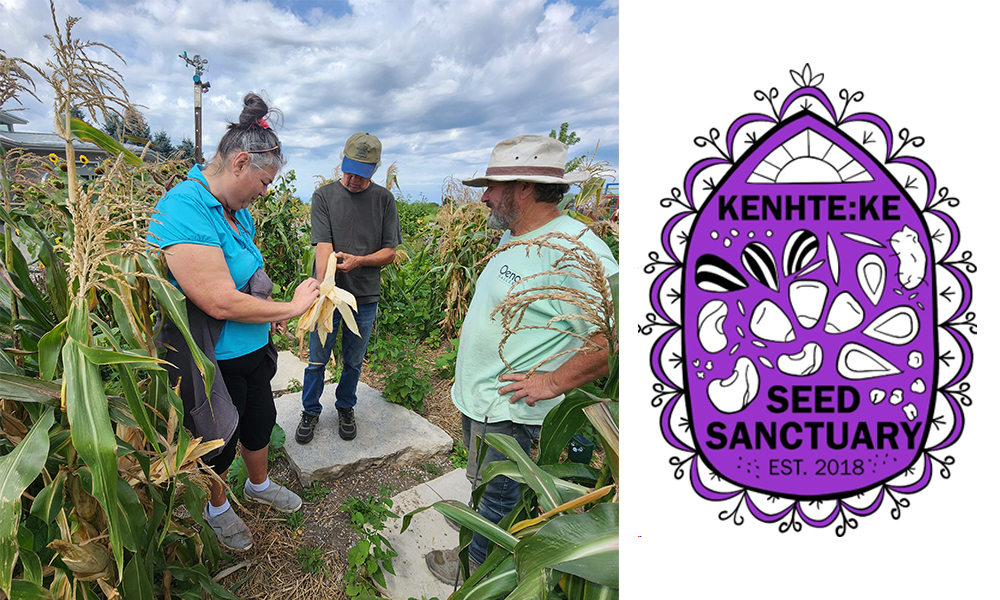The Three Sisters Garden by Kenhte:ke Seed Sanctuary & Learning Centre at Oeno Gallery

Recently, Janice Kahehtoktha Brant and Ken Post, from Kenhte:ke Seed Sanctuary & Learning Centre visited us to check on the seeds they donated in the spring. They harvested some of the seeds and looked at the overall wellbeing of the Three Sisters Garden.
Last spring, Kenhte:ke Seed Sanctuary & Learning Centre generously donated their sacred seeds and shared their vision in cultivating a Three Sisters Garden upon the tranquil grounds of Oeno Gallery's Sculpture Garden. This Three Sisters Garden was lovingly planted using heirloom seeds:
-Kanenhstará:ken: White corn, Mohawk white flour maize
-Yethinisténha Onhwéntsya na’kahsahe’tò:ten: Mother earth bean
-(Te’seróntyon) Ohnennà:ta na’kahsahe’tò:ten: Deseronto Potato bean
-Teyonyarà:kton na’kanon’onserò:ten: Canada crookneck squash
Corn, beans, and squash as they represent the most important crops to sustain life. When planted together, the Three Sisters, work together to help one another thrive and survive. Utilizing the corn, beans, and squash together draws upon centuries of Indigenous agricultural traditions as these three crops complement each other for structural support and soil nutrition. KSSLC’s Thoughtful Donation Embodies the Time-Honored Wisdom of Indigenous Traditions Nurturing Harmony Between Earth and Community.
For more information about Kenhte:ke Seed Sanctuary & Learning Centre, please visit their website.
The Three Sisters Garden can be seen in our Sculpture Garden. The Sculpture Garden is open 7 days/week, from dawn to dusk.
Oeno Gallery acknowledges that we work, live, meet and create on the traditional territory of the Anishnaabeg, Wendat and Haudenosaunee Peoples and adjacent to the Kanien’keha:ka (Mohawk) community of Tyendinaga. Oeno Gallery is committed to the support and advancement of Indigenous artists in Prince Edward County and beyond. Our work will be guided by the 94 Calls to Action proposed by the Truth & Reconciliation Commission of Canada. We also recognize the primacy of the 46 Articles of the United Nations Declaration on the Rights of Indigenous People and in particular, Articles 11 & 31 pertaining to Arts and Culture.